
CONTENTS
- What is a reproduction of paintings
- How reproductions of paintings are made
- How much reproductions of paintings cost
- Where can you buy reproductions of paintings
- Advantages of reproduction versus handmade copy
- How to make an oil painting from a reproduction
- How to distinguish a painting from a reproduction
- Is it permitted to use reproductions of paintings in the interior
- Tips for choosing reproductions of paintings for the interior
- Summary
Reproductions and photographs of paintings by famous artists are common: on T-shirts and pillows, advertising posters, websites and desktop screensavers. For centuries, works of world art have not lost their relevance, inspiring contemporary artists and those who seek to revitalize their interior.
What is the difference between reproduction and other methods of reproducing artworks, how to choose suitable works for your room - this will be discussed in our article.
What is a reproduction of paintings
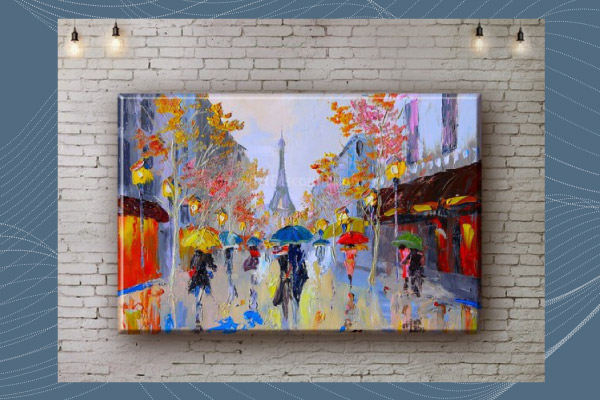
Reproduction of paintings is the most accurate way to reproduce artwork through printing. When the technology was just developed, it was possible to distinguish the analogue from the original with the naked eye. Modern printers can achieve amazing accuracy.
How reproductions of paintings are made
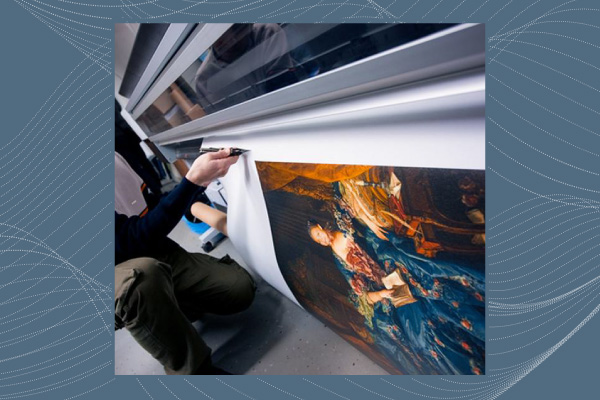
A digital photograph of the painting is taken as a basis, which is transferred onto an art canvas or paper with the help of special equipment. Since the artist's hand is still different from the printer, printing often has to be refined by hand. It is advisable to cover the canvas with varnish for durability. Then it can be framed.
How much reproductions of paintings cost
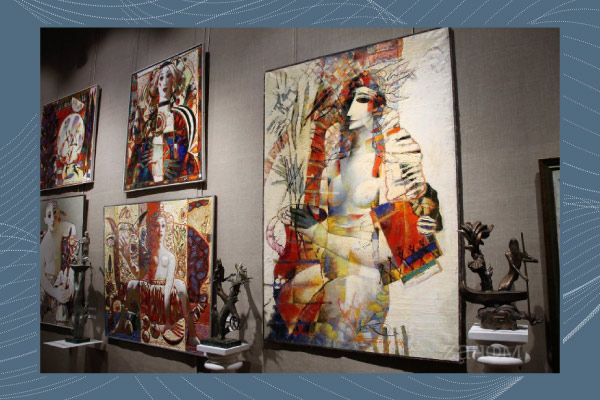
The cost of such work depends on a number of factors: the quality of the materials, the clarity of the image and the size of the printable surface. It also matters how much realism you want to achieve. After all, a reproduction can be done in such a way that it looks like it was painted with oil paints. This increases the painting presentable appearance, as well as the cost.
Only one thing can be said unequivocally about the price of reproductions of paintings on canvas: they are much cheaper than original paintings. This is a reasonable economy, since, as already mentioned, they are visually almost indistinguishable.
Where can you buy reproductions of paintings
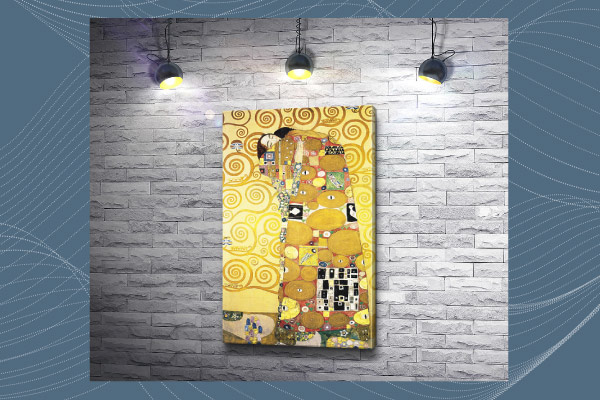
Thanks to online resources, you can order a reproduction of almost any painting on canvas. Popular platforms for such purchases are Etsy, Artsy.
We also offer you high-quality prints of bright author's works by Alla Struchaieva. There is a wide selection of genres, styles and colors, so you can choose a harmonious canvas for any interior.
Advantages of reproduction versus handmade copy

There are other ways to repeat the masterpieces of world art. A copy of a painting, in contrast to a reproduction, is made with paints. The artist paints the picture by hand, trying to exactly repeat the original. But complex shades, characteristic strokes and time adjustments are unique and will not be perfectly the same. The result is the same plot, but with its own distinctive nuances. This is a suitable option if you want to see a real painting at home.
Copying pictures by printing, in turn, repeats each stroke. However, you can still see signs of "non-living" application upon critical analysis. In addition, it is a more affordable version of the artwork, which is much faster to craft. And you can give the image the effect of "liveliness" yourself: apply a textured layer of acrylic gel on top to simulate oil strokes. Such creative work will improve the canvas and allow you to have a good time.
How to make an oil painting from a reproduction
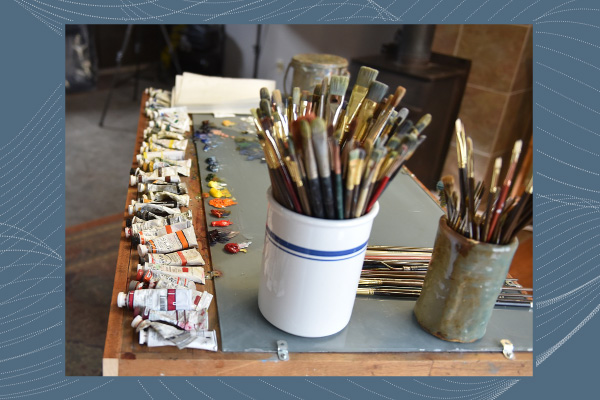
So, let's say you have chosen reproductions of paintings for the interior. There is a canvas with a printed masterpiece, but it lacks volume, which gleams with the right lighting and is felt with your fingers. This can be easily fixed. First, prepare the materials:
medium bristle brush (number 5 or around that);
finishing acrylic gel for modeling;
a jar of water and napkins.
Start applying the gel onto the canvas by repeating the colored strokes on the printed replica of the painting. Do not smooth them too much for a natural textured layer.
Acrylic is the best suited material for this task, since it has a thick texture and does not flow. When you apply the gel, you will immediately notice that it is white. This is not a big deal, because after drying it will become transparent. And you will better see the work done in the process. Use strokes to set the volume that you want to see in the final, because acrylic retains its shape and does not shrink.
It is necessary to periodically rinse the brush in a can of water and wipe it with a napkin, since the gel tends to dry quickly. And when this happens, you will no longer clean the tool. For the same reason, you should move along the surface gradually. It will not work to remove the cured gel and reapply it without damaging the print layer.
This method makes it possible to obtain the most plausible copies of famous paintings. Having finished working with the canvas, it does not need to be varnished. The surface is already sufficiently protected from dust, and you will only need to occasionally wipe it with a damp cloth to care for the painting. However, acrylic gel does not protect from fading. Therefore, inquire in advance about the properties of ink for printing from the manufacturer.
How to distinguish a painting from a reproduction
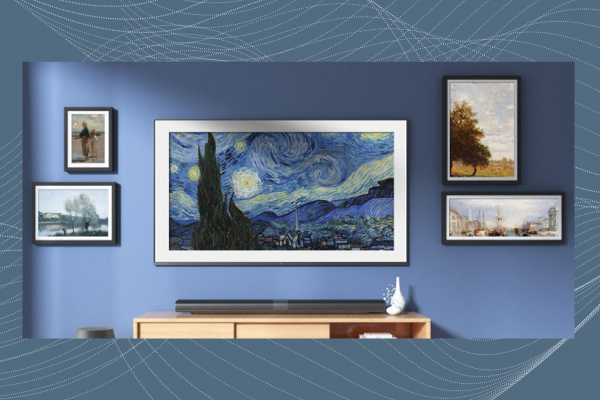
As mentioned above, there are differences between a reproduction and an original painting for the home. They cannot be seen immediately, but when it comes to multiple price differences, we advise you to pay attention to some nuances.
The artist's relief strokes must be visible and palpable. They, of course, can be faked, but if the surface is perfectly flat, this already indicates the use of painting copying technology.
Take a look at the edges of the painting without the baguette. It is extremely rare for artists to make them perfectly even. In the overwhelming majority of cases, this is a sign of a print.
Pass the light of the sun or a bright lamp through the painting. Oil paints have different shades and, accordingly, density, while the printed work will show through in light and dark areas in the same way.
Real painting implies rich, deep, vivid colors. Printing often dims the brightness.
Original artworks are expensive. A suspiciously generous discount should alert you. However, some unscrupulous sellers, after making a copy of the painting, ask for a round sum for it, as for the original.
At the end of the work, most artists put their signature, and sometimes the date on the back. If it is not there, this is not yet a final sign of a fake, but a clear reason to check the product for other points.
Craftsmen stretch linen on an academic stretcher. It is also strengthened with wooden wedges in the corners not to sag over the time. The reproduction will surely be made without them.
Online sites, private sellers, street galleries are not the most reliable options for buying an expensive original. If you want to get one, look for artist workshops, art exhibitions and art salons.
One artist cannot paint thousands of pictures in a couple of years. Therefore, an overly extensive range of works of authorship in a person should make you suspicious.
If the author offers to paint an oil painting to order in just a week, this is definitely a hoax. After all, the oil dries for a very long time, and the finished work can be obtained only after a few months.
Is it permitted to use reproductions of paintings in the interior

Art objects, unlike everyday things, are protected by copyright. At the legislative level, it limits the ability of others to copy or appropriate an artwork. If you don't get permission from the author or the museum that owns the masterpiece, you can run into legal proceedings.
“But what about the famous“ Mona Lisa ”by da Vinci,“ Scream ”by van Edvard Munch and others?” - you ask. They are published everywhere, printed and painted in their own way. The fact is that these artists have long been dead. And copyright protects a piece of art for 70 years after their death. At the end of this period, it becomes possible to use the artwork for their own purposes. But no one has the right to make adjustments and appropriate authorship.
More information about the Copyright Law can be found here. It is important to clarify that this applies only to our compatriot artists. If you are interested in an artwork abroad, you will have to understand the intricacies of the legislation of the country of its origin. But you should not hope for the expiration of the copyright term earlier than 25 years from the date of an artist`s death.
You can do it even easier: find out in which museum the painting is stored, find its website and check if it is marked as “public domain”. If so, then it is absolutely legal to copy.
Tips for choosing reproductions of paintings for the interior
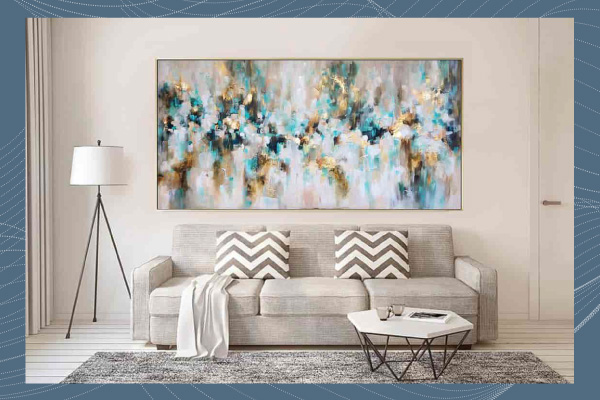
It's time to choose up pictures for the apartment when the renovation has already been done there. You can place accents or fill the void, set a certain mood and a favorable emotional background for household members with their help. Let's share a few tips on how to tastefully choose reproductions for your interior.
First, try to maintain the style of the room - if it is pronounced, of course. If the features of a particular trend are not guessed in the interior, any plots can be used.
Secondly, consider the purpose of the room. It is worth choosing something neutral for the bedroom, and it is better to choose bright, dynamic abstractions for the living room.
Third, take care of a neutral background. Reproductions of paintings look best on plain light walls. However, a subtle pattern is also allowed. By hanging them in such a place, you will allow you to focus entirely on the artworks. We wrote earlier how to choose paintings for your interior in detail.
Summary
Art objects fill our life with beauty and positive emotions. Surrounding yourself with them, you can create the feeling of a cozy hearth, where it is always pleasant to relax in harmony with yourself.
Reproductions by famous artists are popular because they carry immortal plots, but at the same time they are much cheaper than the originals. If you have a passion for paintings and are looking to decorate your home with an extensive collection, this option is perfect for you.
To begin with, we suggest familiarizing yourself with the collection of paintings by Alla Struchaieva on our website.

The earliest work of Leonardo da Vinci
A small painted tile caused quite a stir among the scientists of the art world. This is because some scholars believe that the recently discovered work is Leonardo da Vinci's earliest known work
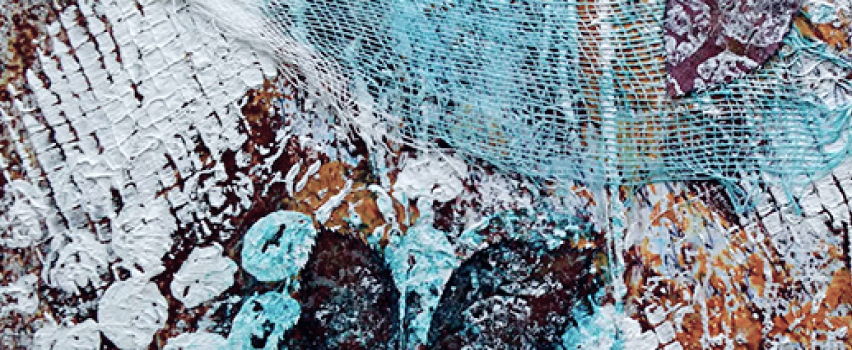
Interesting facts about painting
Paintings hold the secrets of the creator. Sometimes we manage to solve them, but many of them continue to be riddles, or simply stay unnoticed.












Thank you, your review has been sent successfully.
It will be posted on the site after moderation.